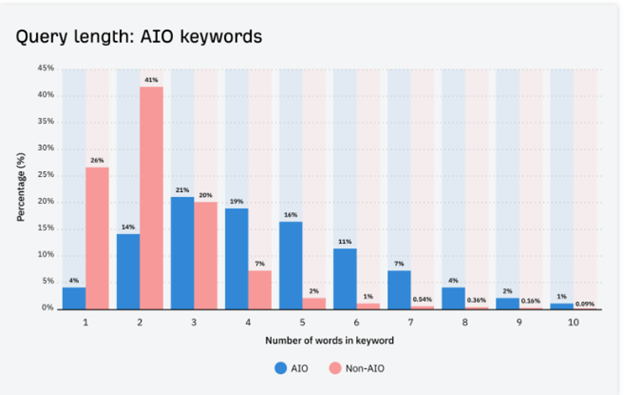It’s no surprise that people have started using generative AI as search engines. This has opened up new doors for search, with brands re-aligning their strategies to shift focus to where searchers are rushing. This is when generative engine optimization comes into play.
But what is Generative Engine Optimization or GEO? It is an innovative technique used to optimize content for AI platforms, and this likely will have an impact on how we perceive SEO in the future.
While digital marketing evolves to accommodate generative AI into search experiences, equipping yourself with the right knowledge and technology will determine the success of your brand in the long run. To help you navigate this new sphere of search optimization, this guide covers all the fundamentals of GEO and its impact.
What Is Generative Engine Optimization?
As we progress towards a more AI-inclusive digital era, GEO is rapidly being adopted and executed. To put it simply, generative engine optimization is the process of generating AI-friendly content to appear in the automated responses by AI platforms such as ChatGPT, Perplexity, and Claude. In other words, it’s like doing SEO for AI search results.
A survey by Search Engine Land indicates that 71.5% of users utilize AI tools for search queries. This means that the audience is shifting to generative AI platforms that provide helpful and straightforward information.
What does this mean for marketers? It’s time to practice generative search optimization.
Again, this translates to creating content with the intention to rank on popular AI platforms such as ChatGPT, Perplexity, Claude, Grok, and Gemini.
Why Do This?
The more your website appears for a query in AI — primarily as a source or reference — the higher the chances of website visitors and brand engagement.
GEO refers to adapting your content structure, format, and style to make it more reliable for LLM scanners. For example, when you search for a query, “what are the best travel agencies in Texas?” on ChatGPT, it gives you a list of websites with their website links, as:
You can also check out the sources from which ChatGPT got this information at the end of the answer. Upon clicking on “Sources”, you’ll be able to view an entire list of website citations.
So, now how does GEO work?
It is implemented using a list of techniques that make you the go-to source of information in a generative AI answer database. This includes standard search engine optimization (SEO) techniques like matching user intent, boosting site authority, and applying schema markup.
Incorporating GEO in your strategy gives you an edge on search engines while aligning your content for AI engines. Besides basic SEO practices, you must also follow the GEOEEAT standards for website content in order to be considered for AI-quoted answers. This Redditor describes GEOEEAT as:
To sum it up, generative engine optimization hinges on three fundamental pillars:
- Adapting content structure and format to make it more suited to be cited or summarized by AI engines during search or conversation.
- Leveraging techniques to make your brand a trusted source of information for AI engines and platforms.
- GEO is like SEO (Search Engine Optimization), but instead of targeting traditional search engines like Google, it focuses on how AI models read and use your content.
How Does GEO Differ From SEO?
Traditional SEO is focused on utilizing strategies that help you rank on search engines. Generative Engine Optimization (GEO), on the other hand, centers on getting your content referenced by AI tools like ChatGPT. Notice the difference? Instead of utilizing keywords and search terms, GEO leverages context and clarity — the two elements that help content be fully understood and extracted by AI search bots. Review this illustration by Seer Interactive for a deeper analysis of how AI and SEO generate results and influence buyer decisions.
In simple words, SEO and GEO differ in some areas like response generation, content synthesis, and performance tracking. Here is a table outlining the common differences between SEO and GEO.
| Aspect | SEO (Search Engine Optimization) | GEO (Generative Engine Optimization) |
| Primary Goal | Rank content on search engine results pages like Google, Bing, and Yahoo. | Get content cited, referenced, or used by AI models like ChatGPT, Perplexity, and Gemini |
| Optimization Focus | Keywords, backlinks, on-page elements, and UX/UI. | Context clarity, structured data, and legible formatting for better AI-readability |
| Algorithm Changes | Continual changes and adaptations are required. | Essential to adapt to LLM behavior patterns and content retrieval heuristics. |
| User Intent Targeting | Based on search queries and keyword matching. | Based on inferred intent from natural language prompts. |
| Content Format | Often uses headings, keyword density, links, and HTML markup. | Uses clear language, bullet points, Q&A formats, and structured summaries. |
| Performance Tracking | Tracing metrics include impressions, clicks, rankings, and bounce rates | Harder to track; may rely on referral traffic in AI citations, brand mentions, and LLM outputs. |
| Content Discovery | Based on indexed web pages. | Based on training data, embeddings, and real-time retrieval tools. |
In essence, SEO and GEO have a few similarities, since they follow some of the same ranking guidelines for content. Winning points for – relevance, matching intent, and providing credible information sources.
While the competition stays vigorous in the field of SEO, GEO remains open to opportunists who are ready to jump on this new search bandwagon. LLMs provide users value through direct query resolution, which may not always contain citations. But despite that, the strategy is worth a shot, especially since it primarily relies on content adaptations and AI readability assessment.
A study carried out by students of Princeton and two other institutions concludes that:
“We propose several ways to optimize content for generative engines and demonstrate that these methods are capable of boosting source visibility by up to 40% in generative engine responses.”
So, using GEO as a blueprint strategy might help open up a whole new channel to generate website clicks and leads in the future. By improving the source visibility of your website on AI engines, you’re much more likely to get referral traffic from these platforms.
Significance Of GEO In The New Search Era
GEO adoption means you’re ready to hop on the futuristic journey of search. In order to keep up with the transforming customer behaviors on search engines, it’s essential to optimize for AI-driven search. This means showing up on AI when people search for:
- Professional services and products
- Original thoughts, insights, or frameworks
- Your offerings and value propositions
- Information where your industry expertise can be of assistance
Given that ChatGPT draws out 800 million users weekly, and Perplexity’s user base grew 66% in the last year alone, there is a clear and consistent pattern of upward growth in the AI search trend.
This is why brands are more keen on adopting generative search optimization now more than ever before. Aside from the growing AI search queries, there are some other reasons for the switch. Let’s discover what they may be:
Improved Brand Visibility
Well-planned and formatted content that follows all the standards of quality and EEAT is considered a priority when trying to rank for AI engines. Adding schema markup as structured data for generative SEO is likely to further enhance the credibility of content, helping it get recognized by the AI bots quickly. Eventually, this type of content will make you a trusted source of information for different AI engines.
It will also lead to greater source visibility, pushing your brand forward as an authority on the matter. Over time, this can lead to stronger brand awareness, higher engagement rate, and increased revenue.
Provides Competitive Edge
Information-rich content pieces that provide value to the readers via AI search engines are a great point of leverage for online brands. After optimizing content for generative engines, they can use their AI visibility to establish their credibility in their niche. In the long run, this could be a great asset in cultivating a positive user perception of the brand.
Tailored Query Resolution
Unlike conventional search engines, where users have to navigate multiple sites to find an answer customized to their situation, AI provides an instant answer backed by citations. GEO focuses on creating content that’s accurate, reliable, and addresses the search purpose. With users getting the search experience they want, there is a greater chance your potential customers will consider switching to your brand for their business and purchase requirements.
Content Differentiation
GEO relies on search-generative experience via SEO tactics that outshine the brand’s reputation through high-quality, value-driven content. By outperforming competitors who rely on keyword stuffing and black-hat SEO practices, your brand will stand out as a trusted leader in your niche market.
Adaptable to the Future Of Search
The future of search is heavily influenced by AI technology, including AI-generated snippets and AI-based search engines. AI content optimization for GEO means preparing effectively for the future of SEO with generative AI. As a brand, early adoption of GEO will provide a competitive edge and help succeed in the constantly evolving search sphere.
How To Adapt To Generative Engine Optimization?
Generative engine optimization integrates many traditional SEO strategies. But what sets it apart is its emphasis on AI adaptability. It takes elements like matching search intent and relevance, but also emphasizes structural content adaptability and AI readability to make it more suited for generative AI responses.
How to begin this shift? Understand how AI selects content. Timely adaptation is key to getting more visibility and brand recognition on AI search engines and LLMs. So, let’s unlock the top generative engine optimization strategies to help you leverage LLM results.
Provide Data-Backed Information:
It’s a common perception that AI engines prefer stats-rich content which cites sources and uses quotations. A GEO study published in 2023 by students of three different universities in the US and India states that:
“GEO methods like the inclusion of citations, quotations from relevant sources, and statistics notably boosted source visibility by over 40% across various queries.”
This clearly indicates that your content must be backed by sources and verified by experts in order to get a chance to appear in the AI generated responses.
Dive deeper into how Google prefers content for its AI Overviews, a.k.a SGEs, in our blog exploring the AI depths and challenges.
Analyze AI Search
GEO begins when you focus on understanding the AI search engines you wish to appear on. This means placing emphasis on context and search motive rather than keywords and search phrases.
Simply put, getting these systems to cite your content is only possible when you master how they work. You can test out these practices to get insights into how AI operates.
- Search your niche queries on AI engines like ChatGPT and Perplexity to find out how they respond. Keep an eye on what type of queries produce citations and sources.
- Stay updated on the latest trends and integrations by joining groups, newsletters, and forums that provide reliable updates on AI’s capabilities and utility. Reddit also has a goldmine of information from people testing theories and AI responses.
- Check how different queries are answered. Greater focus on the structure of the content, such as paragraphs, listicles, and stats. Use the response as your playbook for future content planning.
Now, take the example of the search term “link building strategies for 2025,” which we searched on ChatGPT to test the response. We received an answer in the form of a list, so imitating the same structure in your content is what we recommend. Using titles like “Top 5 Link Building Strategies for 2025” or “A 6 Point Guide To Link Building In 2025” will improve the chances of your content getting cited by AI.
Produce High Quality Content
Adapting content to AI engines is the ultimate fix for generative engine optimization or GEO. AI engines are smart, combining a greater capability to perceive context and credibility for different industries.
Keeping this in mind, your objective should be to become the go-to answer engine for AI. For this to happen, content comes at the top of the priority list, with strategies that provide AI engines what they need. At the core, this means straightforward answers, clear content structure, and transparency about informational sources. These strategies, combined with other content tactics, have the capability to boost your AI visibility by 40%.
- Clear content with zero fluff — easy to understand both for searchers and search engines. The trick is to deliver complex ideas in a language and tone understandable to a layman.
- Go beyond the whys and hows to provide practical tips and recommendations covering the topic from all angles.
- Make sure that your content is consistent with the most recent trends in the field. For example, the latest in content optimization is the use of AI for generative engine optimization.
- Throw in some niche-specific terminology in the content to show your expertise on the subject.
- Use more than just text-based content. AI engines can also navigate through visual forms of content like images, videos, and infographics, all of which are known to push your content further up in the AI answers.
Strategically Employ Keywords
It’s known that multi-word queries are much more likely to appear in the AI overviews and LLM responses. This evidence in this chart by Ahrefs shows a higher AIO appearance for three and four-word queries.
Our playbook when working with GEO keywords is to stay relevant and ensure AI visibility by deploying keywords with:
- Relevance
- Semantic value
- High ranking potential on search
- Upward traffic trends
For GEO, you can perform keyword research the same way you would for conventional search engine results pages. The objective should be to build keyword chains that resonate with your audience and provide contextual value. Natural integration and semantic relevance can lead you towards a better ranking potential for AI-driven queries.
Track Performance
Implementing GEO strategies and best practices is essential, but so is evaluating how this new adaptation offers positive brand outcomes. Determining and monitoring KPIs, like traffic, conversions, and impressions, will help gauge which strategies are most effective for GEO success. For this, Hubspot’s AI Search Grader is a great place to start. It helps you analyze how well your content is optimized for GEO.
Regular assessment of impressions can provide an outline of the average performance of your content on LLMs and AI engines like ChatGPT, Perplexity and Gemini.
Analyzing GEO traffic trends and improvement in conversion rates can help pinpoint areas where GEO strategies might be working for you.
Set personalized KPIs for your brand to assess whether GEO is effective in achieving specific marketing goals. Keep in mind that this is not a drill, and any notable results are contingent on how well your content follows GEOEEAT and standard SEO practices. A higher domain authority can further help you soar as a brand on AI engines.
The Future Of Generative Engine Optimization
AI engines are constantly changing and improving, as they are still in the adaptation phase. But who is to say they will not define the future of search? Here are our two cents on the matter.
AI’s involvement in search is inevitable as we progress into a more tech-forward era. Therefore, early adaptation is better than future regrets.
GEO and SEO can be implemented side by side with mutual optimization practices like intent targeting, appropriate content structure, and performance tracking. Some things may still differ, for example, their content ranking systems, algorithms, and website display.
For a competitive edge, it’s advisable to establish GEO principles and follow optimization patterns to ensure that your content can rank within generative AI answers besides traditional search engine results pages.













